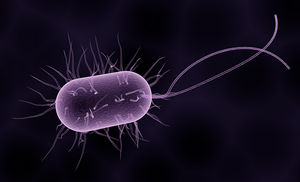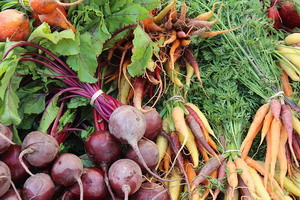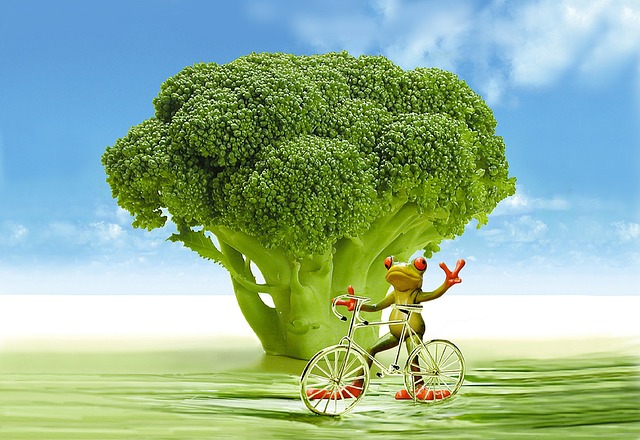
The more I research leaky gut and the development of degenerative disease conditions, the more I run into our gut microbiome as the key player in this whole problem. The pathways from things like Alzheimer’s disease, heart disease, cancer, arthritis, autoimmune disease, and so on keep tracing back to the gut as the starting place for these plagues of aging. Yet interestingly all these conditions were relatively unknown 150 years ago. Yes, they would happen hear and there, but they were medical curiosities. Most people died of an infectious disease or simply from old age back then.
So what is going on that we suddenly have all these bizarre “new” diseases? Well part of this is certainly because of improved sanitation and an understanding of microbial disease transmission drastically reducing death by infection. The battle against the germ was basically won shortly after WW2, before even the first vaccine was ever developed. That meant that people were now free to live long enough to develop degenerative diseases; at least that is how the story is told. Our health system would have us believe that through the use of our wonderful medicines our lifespan is magically getting longer. Individually, this isn’t actually true. Statistically the numbers say so, but as Mark Twain once said, “There’s lies, damn lies, and statistics.” A hundred fifty years ago women had a greater chance of dying during child birth than they do now and their babies had a greater change of dying at birth or within the first few years of life. That, statistically makes it look as though our average lifespan was only

30 or 40 years long. The truth is if you lived to reach the age of 16, you had a good shot at living into your 80s or 90s healthy and clear headed.
So the first half of the last century drastically cut down on child deaths due to medical advances, yet at the same time we started to see an increase in degenerative diseases. What happened? What happened is progress. We moved from a basically agrarian culture to an industrialized culture. Petroleum was discovered and the chemical industries were started. Factory lines were invented and electricity allowed us to work around the clock. Physical labor gradually changed to indoor labor that did not involve nearly the movement we used to require. Most of all food production became industrialized. No longer were we eating what we grew in our front yard or exchanged with our neighbors. Now food came out of a can or a box. That meant food had to be able to sit on a shelf for long periods of time, so we developed chemicals to preserve the food while removing parts of the food that would spoil easily. That meant removing the fragile oils bound up in the fiber around the grains. It meant reducing the diversity of fresh foods and focusing on how many ways could we make wheat, corn, rice, and sugar look like food.
Your average hunter-gatherer will eat hundreds of different foods over the course of a year. The average American only consumes 8 to 12 different kinds of food over a year. Of that, 80% is from wheat, corn, soy, sugar, and dairy. Even more importantly, the hunter-gatherer is eating his hundreds of foods pretty much as he finds them in the wild. Our food has been so heavily processed and chemically treated that we have no idea what it is when we eat it.

What is the end result of this industrialization process? The result is something we are only now just beginning to grasp. Our health is intimately tied to the health of the gut microbes in our gut. It is estimated that 90% of the DNA in our body is from gut microbes. If we don’t have the right gut microbes, we don’t have health. No matter how much time you spend at the gym, at yoga class, meditating, going to doctors, or taking vitamins, if you don’t have a healthy and diverse gut microbial population in your gut, your health is sliding downhill.
A healthy gut has over 500 different types of gut bacteria, and everyone has different ones. The exact bacteria in each of our guts is as individual as our fingerprints. But what happens when we stop eating a hugely diverse diet and only eat a dozen different foods? The different strains of gut bacteria all eat different things. What happens if the foods we are eating doesn’t even have any of the nutrients these bacteria need to survive? What about what we are eating? What do these chemically treated, processed, shelf stable foods actually feed?

If you have read my last couple of newsletters you already know the answers to these questions. Healthy gut bacteria mostly eat different types of soluble fibers, gums, and resistant starches. Bad guy bacteria, the ones that create the degenerative diseases in our bodies, eat the stuff we love so much – sugar, undigested proteins, carbs, saturated fats, and heat damaged oils. Basically they love doughnuts, pizza, french fries, chicken nuggets, ice cream, and energy drinks. They are fast food junkies, packaged food addicts, snack food demons, and love eating way too much at a time.
Health promoting bacteria want you to shop at the farmers market for fresh veggies, local in-season fruits, pastured grass-fed meats and eggs, and all cooked with low temperatures using olive oil or avocado oil. They like a Mediterranean diet that consist of a small amount of meat, a ton of seasonal vegetables and no sugar. They will eat different fresh foods every day, emphasizing diversity and variety – nothing packaged, artificially colored or flavored and no preservatives.

A healthy gut is a very complex ecology, much like a rain forest. It is hundreds of different types of bacteria, fungi, and viruses all working together to form one big happy family. When they are happy, we stay healthy. For that to happen they need the right types of foods daily. It is scary how quickly a good gut can turn bad when we eat the wrong foods. Scientists have measured a complete change of bacterial population balance toward the negative from eating a bad diet in as little as 24 hours. Once the bad guys get in there they start inflammation which helps them dig in and set up shop. They strip away the protective layers of mucus and immunoglobulins and attach to the lining of the gut then build a chemical force field over themselves called a biofilm that enables them to stay put even when you go back to eating well. They even hijack our brains by sending chemical messengers to our brains making us crave the foods they need to grow and multiply. They are the health devils, so when you grab that doughnut, you can say “the devil made me do that.”
So how do we fight back? It is a slow process. We have to eat a healthy diet consistently forever. We need to expand the diversity of vegetable foods we eat to try to grow the good guys back again. We can take prebiotic fibers to feed the good guys like inulin, oligosaccharides, acacia fiber, guar gum, glucomannan, and so on. We can use herbs to help eliminate the bad guys. We can use support like colostrum and Humic substances to rebuild the gut lining damaged by the bad guys. We can stay away from foods and chemicals like glyphosate, sugar, and gluten that damage the gut and make it vulnerable. We can make sure our digestive functions, like our stomach acid and enzyme production, is working well or compensated for. We can be sure to get good sleep and spend the

majority of our day unstressed.
Fiber is the food our good guys need the most, but not everybody is able to use fiber successfully. Some people will actually get worse if they use fiber. More on this subject next time.
